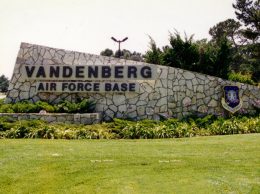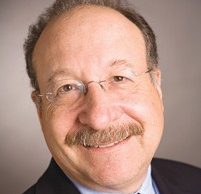Tom Mueller, the head of rocket engine development at Hawthorne-based SpaceX, said there’s been one time he disappointed Elon Musk, the former PayPal co-founder who is head of both the spaceflight startup and electric car maker Tesla Motors.
It was during a test flight of an experimental craft called the Grasshopper, a rocket designed to both take off and land from a vertical position. Last fall, the Grasshopper successfully reached a height of 2,441 feet before landing again, a feat of physics many doubted was possible.
“It didn’t make a crater in the ground like everyone thought it would,” Mueller said. “Elon was a little upset about that. If you don’t crash the thing, you’re not pushing it hard enough.”
Mueller spoke to a crowd of more than 100 in Santa Barbara on Feb. 19 at an event called “Exploring the Next Frontier: The Commercialization of Space is Lifting Off” hosted by the Central Coast MIT Enterprise Forum.
Mueller told the crowd, which included a heavy contingent of high school engineering students, that it was a lifelong dream of his to build rocket engines.
“I was flying model rockets when I was 12,” he said. During high school, “I made a rocket engine out of my dad’s acetylene torch.”
A string of engineering jobs eventually led to a position working on rocket engines at TRW in Southern California. He met Musk, who “Iron Man” director Jon Favreau said inspired the character Tony Stark, just before PayPal went public. Then eBay bought PayPal. Musk turned to rockets and hired Mueller.
“We had enough capital to do rockets. And right from the get-go, we were going to do manned rockets and go to Mars,” Mueller said. “It seemed kind of crazy then, but it doesn’t seem as crazy now.”
That is because the company is under contract to keep the International Space Station supplied and later this year plans to test the most powerful American rocket ever built aside from the now-defunct Saturn V rockets that took U.S. astronauts to the moon. The company has about 4,000 employees.
“Right now, what we’re doing is the evolution, and we’re working on the revolution,” Mueller said.
SpaceX also uses Santa Barbara County’s Vandenberg Air Force Base for about 20 percent of its launches. (Because of its West Coast location, Vandenberg is suitable only for rockets that need to orbit around the poles, rather than the equator.) It conducted an important test one on of its smaller rockets, the Falcon 9, last fall. The test went well, except that when the rocket re-entered the earth’s atmosphere, it began to spin. That caused internal damage that clogged the engines and prevented its re-entry thrusters from softening its fall into the ocean.
“It hit the water at about 100 mph and didn’t survive, but we were really close to recovering that rocket,” Mueller said.
Being able to reuse the pricey upper stage of a rocket is extremely important to costs and efficiency. It’s a key goal at SpaceX. “When you drive to the mall, you don’t want to take a taxi home and then have a tow truck bring your car home. You want to land in your driveway,” he said.
Right now, the company’s Dragon capsule is the only vehicle capable of brining back cargo from the International Space Station, but the end goal is to transport people. “You don’t put a window in a cargo vehicle,” Mueller said of the design.
Safety is a major concern for transporting people into orbit. The company is working on so-called Draco engines that could fire up and provide full thrust within in one tenth of a second. That means the passenger capsule could detect a problem with a launch rocket and blast away from it within a tenth of a second, using the Draco engines for a safe, controlled touchdown on land or sea. Mueller said that could prevent disasters like the deaths of the crews aboard the shuttles Challenger and Columbia.
“If the astronauts had had an escape system, they could have survived that,” Mueller said.
But the company’s true goal remains Mars. Mueller said Musk’s office has two giant pictures of Mars – one as the red planet looks today, and one as it might look if colonized.
These days, Mueller’s main focus is the Raptor engine, a reusable power plant that would use liquid methane and oxygen and provide 1 million pounds of thrust. Nine of them would be combined on one craft.
“It’s going to put over 100 tons of cargo up to Mars,” Mueller said. “That’s what it takes to get to Mars.”
[FULL DISCLOSURE: The Pacific Coast Business Times is a media sponsor of the Central Coast MIT Enterprise Forum, and Stephen Nellis serves on the organization’s board of directors.] [Editor’s note: This story has been corrected to reflect that the Falcon Heavy is the second-largest American rocket ever built.]





 Print
Print Email
Email


















Any word on grasshopper 2.0 test flights? Dragon abort tests? Falcon Heavy launch dates? Plans for recovery of the Falcon 9 first stage on the next ISS re-supply flight? All these are supposed to be happening this year. It would be awesome to hear SpaceX address them. Of course, I can understand if they need to keep silent for proprietary reasons, but in many ways this could be the big year for SpaceX and commercial spaceflight.
You’ve made a few mistakes in this article. The biggest is claiming that Falcon Heavy will be the second-most-powerful rocket ever built. In actuality, it will be the fourth-most-powerful ever built and (assuming it succeeds) the third-most-powerful ever launched.
Those two other rockets were both from the USSR, and both were significantly more powerful than Falcon Heavy. The first was N1, which was intended to launch Cosmonauts to the Moon. It was larger than Saturn V and significantly heavier, but because Saturn V used high-efficiency cryogenic upper stages, the amount of payload N1 could carry was significantly smaller. Regardless, all four unmanned tests were complete failures, so it can be considered “built” but not “launched”.
More recently was Energia, which was even more powerful than N1 launched twice successfully, though the first flight ended in failure due to a guidance fault in the payload. The second flight was a complete success, and was the only launch of the Buran spaceplane. To give you an idea of how powerful Energia was, it used 4 Zenit strap-on booster rockets which are still used today *individually* as medium-lift rockets. As powerful as that was, an unflown variant of Energia would have increased its capacity by 3/4, and would have surpassed the lifting capability of Saturn V by nearly 50%. The program was cancelled, however, with the end of the Soviet Union. It’s unfortunate, as the entire Russian segment of ISS could have been launched (potentially) on a single rocket.
It’s easy to exclude N1 by changing the wording from “built” to “launched” (in fact, that would even be preferred), but there’s really no getting around Energia. It was simply an immensely powerful launcher with an extremely short, impressive history.
The other mistake is regarding the spinning Falcon 9 lower stage. To my knowledge the spin didn’t cause damage or clog the engines, it’s a little more complex than that. Instead, the spinning caused the propellant to slide up the curved walls of the tanks (thanks to centrifugal force) which pulled it away from the fuel lines. That caused the engine (only one of the nine is used when landing) to shut down a few seconds before it had completely stopped the rocket.
Hi Rob,
I was at the event. Tom Mueller explicitly stated that the tank’s internal baffles where damaged by the spin and that the engine shutdown was consistent with the time it would take for the “shrapnel” (my word, not his) to flow through the fuel line and enter the engine. This is new information that I have not seen elsewhere, but it is consistent with the explanation he gave at the event.